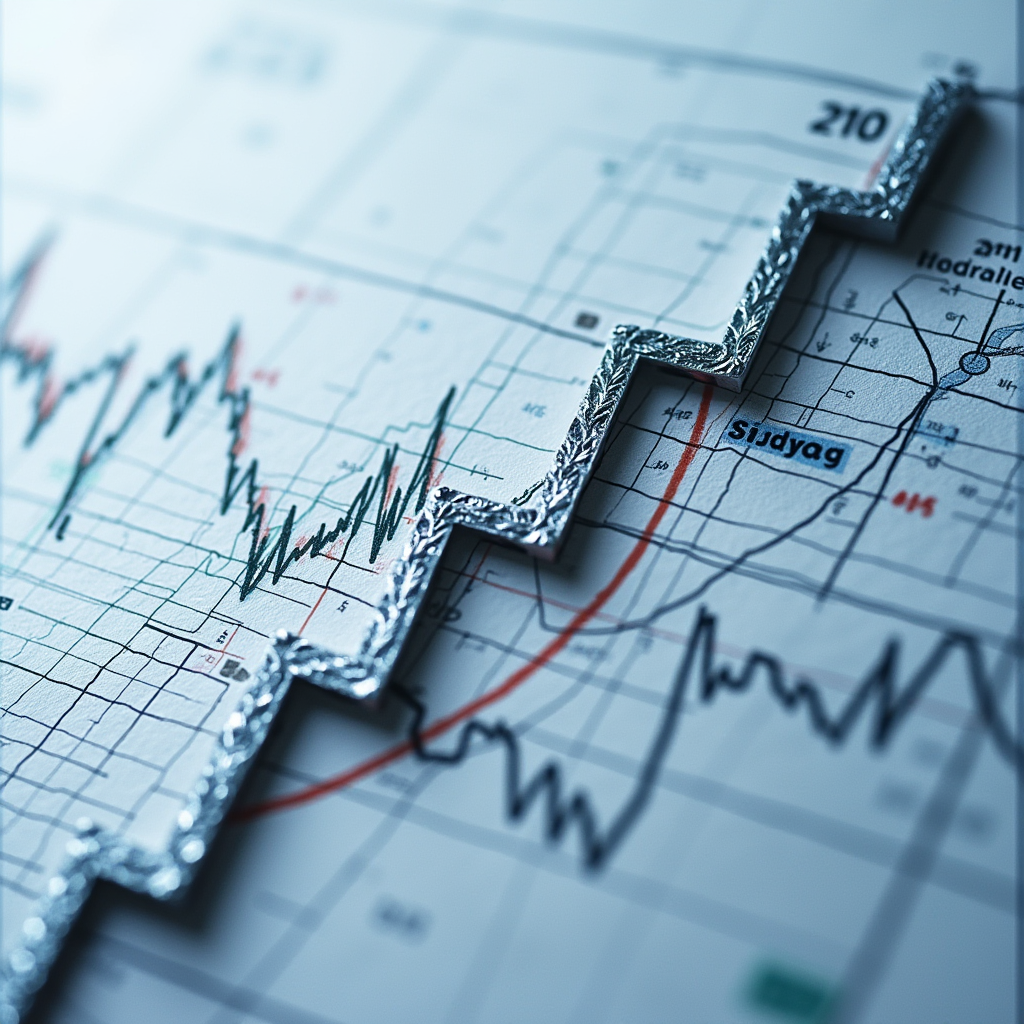
The US30, also known as the Dow Jones Industrial Average (DJIA), is one of the most widely recognized stock market indices, representing 30 major publicly traded companies in the United States. It serves as a key benchmark for investors analyzing market trends, economic conditions, and overall stock performance.
Traders and investors closely follow US30 because of its ability to reflect broader market sentiment. Despite being composed of only 30 companies, it often moves in tandem with the larger market, making it an important indicator for both institutional and retail traders.
What Is US30 in Trading?
US30 is a price-weighted stock market index, meaning the movements of higher-priced stocks impact its value more than lower-priced ones. Unlike market-cap-weighted indices such as the S&P 500, where larger companies hold more influence, US30 reflects the stock price changes of 30 blue-chip companies, regardless of their market capitalization.
Traders often use US30 as a way to gauge market sentiment, hedge portfolios, or speculate on short-term price movements. The index is available for trading via futures contracts, exchange-traded funds (ETFs), and contracts for difference (CFDs), making it accessible to both long-term investors and short-term traders.
Key features of US30 index
- Composed of 30 major U.S. companies across various industries, from technology to healthcare and finance.
- Price-weighted calculation gives higher-priced stocks more influence over index movements.
- Tracked globally as a leading indicator of U.S. stock market health.
- Tradeable through multiple instruments, including futures, CFDs, and ETFs.
- Influenced by macroeconomic events, earnings reports, and Federal Reserve policies.
US30 Price Movements and Influencing Factors
US30 price fluctuations stem from a combination of economic data, corporate earnings, geopolitical events, and Federal Reserve policies. Traders analyze these factors to anticipate market trends and make informed trading decisions.
Key drivers affecting US30 fluctuations
- Economic Indicators – Reports such as GDP growth, inflation rates, and employment figures influence investor confidence in the broader economy.
- Federal Reserve Decisions – Interest rate hikes or cuts affect borrowing costs, impacting corporate profitability and stock prices.
- Earnings Reports – Strong or weak earnings from the 30 listed companies can drive index movements.
- Geopolitical Events – Trade wars, elections, and international conflicts often create volatility.
- Market Sentiment – Investor behavior, risk appetite, and institutional trading patterns play a significant role.
History of US30 and Its Evolution
US30 was created by Charles Dow in 1896 as a way to measure the performance of the industrial sector. Over time, it has evolved to include companies from various industries, reflecting the shifting dynamics of the U.S. economy.
Major milestones and changes in US30
- 1896: US30 launched with 12 industrial companies.
- 1928: Expanded to 30 companies, a structure still used today.
- 1999: Tech giants Microsoft and Intel joined, marking a shift from traditional industries.
- 2008: Financial crisis led to changes in index composition, with major banks replaced.
- 2020: Salesforce, Amgen, and Honeywell replaced ExxonMobil, Pfizer, and Raytheon, reflecting shifts in economic trends.
How US30 Is Calculated
US30 is a price-weighted index, meaning the stock price of each company determines its impact on the index. Higher-priced stocks exert more influence than lower-priced ones, unlike market-cap-weighted indices where company size matters more.
Price-weighted methodology explained
- Each company’s stock price is summed up and divided by a Dow Divisor, which adjusts for stock splits, dividends, and structural changes.
- Companies with higher stock prices affect the index more, regardless of their total market value.
- Stock splits reduce a company’s weighting but do not impact the overall index value.
Companies Listed in US30
The 30 companies in US30 span multiple industries, including technology, healthcare, financial services, and consumer goods. The composition changes periodically to ensure relevance to the current economic landscape.
Notable firms shaping US30 performance
- Apple (AAPL) – Tech leader with a significant impact on market trends.
- Goldman Sachs (GS) – A key player in banking and financial services.
- Microsoft (MSFT) – A major force in cloud computing and software.
- Boeing (BA) – A bellwether for industrial and aerospace sectors.
- Walmart (WMT) – A retail giant reflecting consumer spending trends.
The diverse mix of companies ensures US30 remains a relevant indicator of economic health, though its price-weighted nature means some high-priced stocks disproportionately affect movements.
US30 remains a crucial tool for investors, offering insight into broader market trends and opportunities for strategic trading.
US30 vs. S&P 500: Key Differences
US30 and the S&P 500 are two of the most closely watched stock market indices, but they differ in composition, weighting, and market representation. Traders and investors often compare them to assess market trends and develop trading strategies.
US30 consists of 30 blue-chip companies with a price-weighted methodology, meaning higher-priced stocks have a greater influence on index movements. The S&P 500, on the other hand, comprises 500 companies and is market-cap weighted, giving larger firms more impact.
Performance comparison and sector exposure
- Market Representation: The S&P 500 reflects a broader market, while US30 represents a smaller, high-profile segment.
- Sector Exposure: The S&P 500 provides more diversification, while US30 is concentrated on a select group of companies.
- Volatility: US30 tends to be more volatile due to the influence of individual high-priced stocks, while the S&P 500 moves more gradually.
- Historical Performance: Over the past decades, the S&P 500 has shown steadier growth, while US30 has had sharper price swings due to its smaller composition.
Disadvantages of US30 Index
Despite its reputation as a key market indicator, US30 has limitations that traders should consider before including it in their portfolios.
One major drawback is its price-weighted structure, which gives undue influence to companies with higher stock prices rather than those with larger market capitalizations. This can lead to imbalanced movements, where a single stock’s price change significantly impacts the entire index.
Risks and limitations for traders
- Limited Diversification – US30 represents just 30 companies, offering less market breadth than broader indices.
- Higher Volatility – Large price swings in high-priced stocks can create sudden and unpredictable movements.
- Sector Bias – The index may not fully represent all market sectors, leading to exposure gaps.
- Less Reflective of Overall Economy – While influential, it does not capture mid- and small-cap company performance like the S&P 500.
Why US30 Is a Key Market Indicator
US30 is often viewed as a barometer of U.S. economic health, tracking the performance of some of the country’s most influential companies. It serves as a reference point for traders, economists, and policymakers assessing overall market trends.
Since its inception, the index has provided insights into investor confidence, economic cycles, and financial stability. Large price swings in US30 can signal market sentiment shifts, influencing global financial markets.
Economic significance and investor interest
- Indicator of Economic Strength: US30 companies span multiple industries, offering a snapshot of corporate America.
- Impact on Global Markets: International investors watch US30 movements to gauge U.S. economic conditions.
- Institutional and Retail Interest: Hedge funds, banks, and individual traders use US30 for speculation and portfolio hedging.
Why US30 Is Called Dow 30
The Dow 30 name originates from Charles Dow, co-founder of Dow Jones & Company, who created the index in 1896. Initially composed of 12 industrial stocks, it later expanded to 30 to better reflect leading corporations in the U.S. economy.
Unlike other indices, which are often market-cap weighted, Dow 30 retained a price-weighted calculation method, making it distinct from indices such as the Nasdaq Composite or S&P 500.
Origins and naming conventions
- “Dow” comes from Charles Dow, the financial journalist who conceptualized the index.
- “Jones” refers to Edward Jones, Dow’s business partner.
- “30” represents the number of constituent companies in the index.
While it originally focused on industrial firms, Dow 30 now includes companies across technology, healthcare, and consumer sectors, reflecting modern economic trends.
How to Trade US30
Traders can speculate on US30 price movements through several financial instruments, depending on their strategy, risk tolerance, and trading objectives.
Popular strategies and platforms
- Futures Contracts: US30 futures allow traders to speculate on index movements with leverage.
- CFDs (Contracts for Difference): Traders can go long or short without owning the underlying assets.
- ETFs (Exchange-Traded Funds): Funds like SPDR Dow Jones Industrial Average ETF (DIA) track the index’s performance.
- Options Trading: Provides opportunities for hedging or leveraging directional moves.
- Forex Brokers & Trading Platforms: Platforms like MetaTrader 4/5, ThinkorSwim, and TradingView offer access to US30 trading.
FAQs on US30 Trading
Traders often have questions regarding US30 trading conditions, strategies, and risk factors. Below are some of the most common queries.
Common questions answered
- What time does US30 trade?
US30 futures trade nearly 24/5, with pre-market and after-hours trading available. CFD trading times depend on the broker. - Is US30 good for day trading?
Due to its high liquidity and volatility, US30 is popular among day traders looking for short-term opportunities. - How is US30 different from Nasdaq 100?
Nasdaq 100 is tech-heavy, while US30 covers multiple industries with a price-weighted approach. - What affects US30 the most?
Federal Reserve policy, corporate earnings, and macroeconomic data are key price drivers. - Can I trade US30 with leverage?
Yes, most brokers offer leverage, but traders should be aware of the associated risks.
